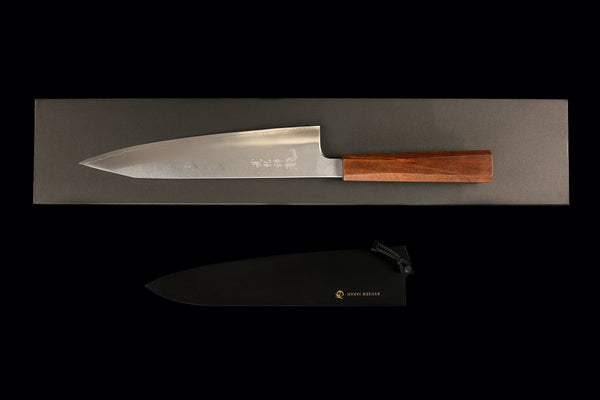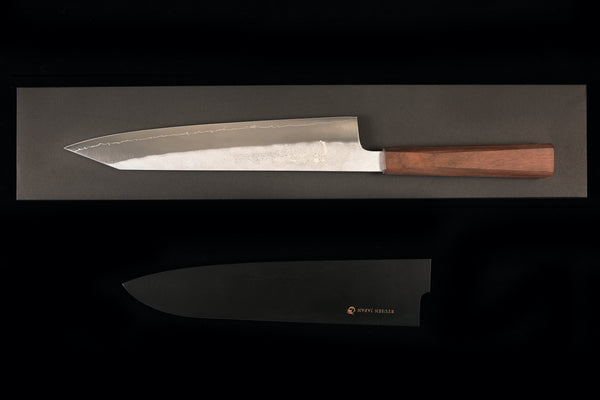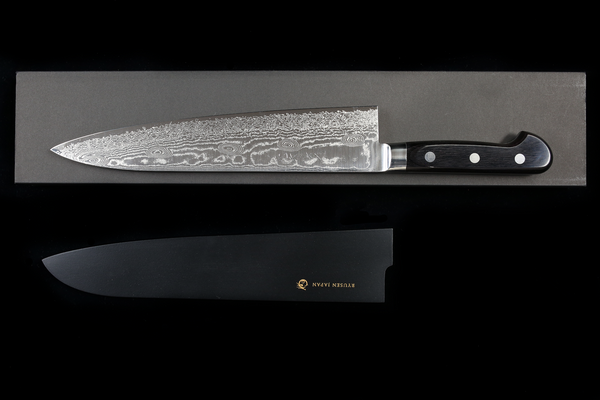-
"Honyaki" is a traditional Japanese term used to describe a type of high-quality knife made from a single piece of steel, usually carbon, without any additional layers or cladding. The term “honyaki” emphasizes the knife's craftsmanship and the purity of its materials.
This particluar example is made of White #1, is very finely mirror-polished, comes with a very handsome tagayasan (wenge) handle and impressive tagayasan saya, and the hamon depicts Mount Fuji with a sun on one side of the blade and a crescent moon on the other side.
The process of making a honyaki knife involves heating the steel to a glowing, cherry red temperature, forging it into shape, differentially heat-treating the blade by placing a layer of insulating clay on the spine, and quenching it in either oil or water. Water-quenched blades are much more difficult to work with, resulting in a higher rate of loss. This type of knife is known for its exceptional sharpness, edge retention, and craftsmanship. However, honyaki knives require more care and attention during use compared to sanmai knives, as they are exceptionally hard and brittle.
Due to their intricate and demanding production process, honyaki knives are often considered the pinnacle of knife craftsmanship and are highly prized by chefs and culinary enthusiasts.
The pursuit of mastering the honyaki blacksmithing technique is one that can take a craftsman years. Within that time there is a huge number of lost kiji (rough forged blanks) that shatter or crack during the heat treatment process. I remember touring the workshop of a really talented craftsman. Tucked away in a corner of the space was a box filled with dozens of kiji, possibly a hundred, and they were all cracked.
As these knives are carbon steel, they will need to be cared for as such. You can read more in our about knife care section. Carbon steel can rust if not cared for properly, so please make sure to clean and dry your knife after use.
-
Knife Type: Gyuto
-
Steel Type: White #1 Carbon
-
Handle Type: Octagonal Tagayasan (
-
Construction Type: Monosteel Honyaki
-
Hand Orientation: Ambidextrous
-
Handle Length: 142mm
-
Handle Height: 28mm
-
Handle Width: 22mm
-
Handle to Tip Length: 214mm
-
Heel to Tip Length: 201mm
-
Width of Spine at Middle: 2.28mm
-
Width of Spine 1cm from the Tip: 0.93mm
-
Width of Spine at Handle: 2.22mm
-
Width of Spine above Heel: 2.20mm
-
Blade Thickness 1/2 way between the Spine and Edge: 1.73mm
-
Blade Height at Heel: 48mm
-
Weight: 163g










